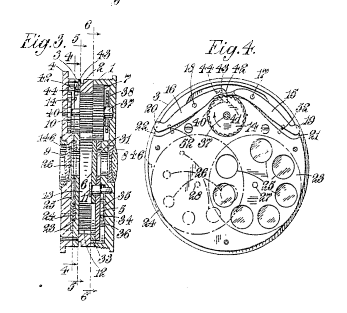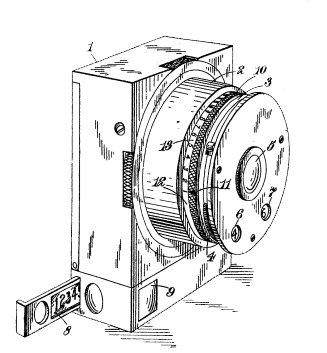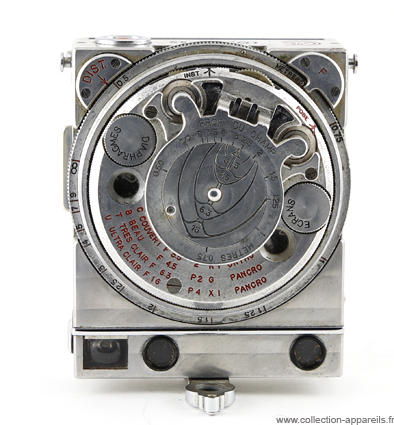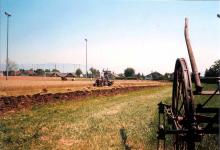|
Compass Compass |
Manufactured or assembled in Swiss from 1937 to (After) 1937.
Index of rarity in France: Rare (among non-specialized garage sales)
Inventory number: 3100
See the complete technical specifications
Chronology of cameras Compass
"The ultimate rangefinder" is the most frequently read description about it. Admittedly, it's better to have small fingers to operate this camera, but for the Swiss watchmaker Lecoultre's only foray into photography, it's quite successful.
Its design is credited to Noel Pemberton Billing, a versatile inventor. During the first half of the 20th century, he filed numerous patents for typewriters, calculating machines, seaplane floats, gramophone tonearms, heating stoves, golf balls, projectors, and of course, cameras.
Several patents concern elements found on the Compass.
Patent 780648 was filed on October 31, 1934, for a "Shutter mechanism for cameras".

Patent 780649 was filed on October 31, 1934, for "Improvements to cameras" concerning a viewfinder incorporating a photometer and a rangefinder.

Patent 186 291 for Rollfilmkamerahinterteil was filed on October 9, 1935.

The lens is an anastigmat 3.5/35 mm. The shutter speed ranges from 1/500 to 4.5 seconds.
Focusing can be done either with the coupled rangefinder, using the ground glass and its magnifier, or by utilizing the distance scale and the depth of field calculator beautifully placed on the lens cap. For the aperture, it's a bit less sophisticated, lacking an iris but featuring rotating valves of various diameters. A series of filters is placed on a second barrel symmetrical to the diaphragm barrel.
For exposure measurement, there is an extinction light meter whose range can be extended by inserting an additional filter. There's also the option to convert the standard viewfinder into an angle viewfinder by moving a tiny lever.
A special tripod exists which, when used with the appropriate accessories, allows for panoramic photos (five successive shots at 45° intervals cover 225° of a landscape) or stereoscopic photos (two shots taken from two positions approximately 6 cm apart). For these applications, the level on the camera becomes very important.
 The Compass was manufactured from 1937 to 1940, with fewer than 4,000 units produced. These units can be found with markings in English, French, or German.
The Compass was manufactured from 1937 to 1940, with fewer than 4,000 units produced. These units can be found with markings in English, French, or German.
André Bessot and Bernard Muraccioli tracked Compass sales for two years. Out of 221 units, 177 had identifiable engravings. It was found that 136 (77%) were engraved in English, 30 (17%) in French, and 11 (6%) in German. Their distribution according to the serial number is presented in the graph. The "Chiffres Clés" from Patrice-Hervé Pont (Fotosaga) provide the following distribution for serial numbers: from 1000 to around 2000 in 1937, from around 2000 to around 3500 in 1938, and from around 3500 to around 4700 in 1939. It should be noted that serial numbers higher than 4700 (up to 5137) were found in this study. Non-English engravings begin in late 1938.
The special plates and films have not been manufactured since the end of World War II.


Interesting links or bibliography :
Add a link or element of bibliography, a picture taken with this camera, a picture of box or an ads about this camera
Your photos taken with the same camera:
Cameras from Ebay France (Compass) (Uploaded each 3 hours)







